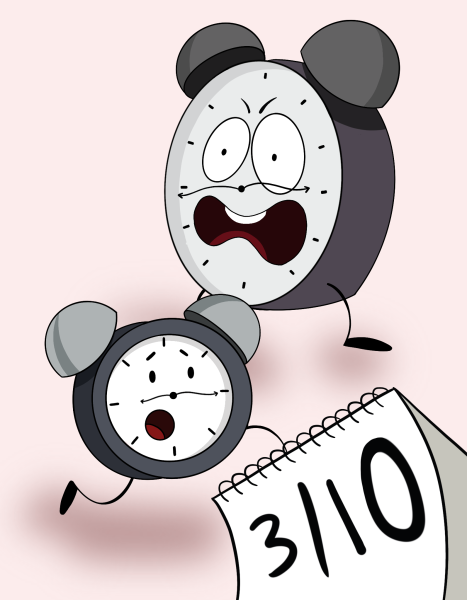K-Pop Offers Surprising Solace
January 10, 2018
Having been rejected by one of my top college choices and saddened by the resignation of our family’s favorite television journalist due to allegations of sexual harassment, the world has seemed particularly harsh recently.
I needed a distraction, a bandaid to counter the pain I’ve felt.
The bubblegum-pink, airbrushed, sequin unreality of K-Pop answered that call.
K-Pop (Korean pop) is a genre of music that’s been around since about the 1990s. Consensus credits the movement’s origins to Korean band Seo Taiji and Boys who grew extremely popular after their start in 1992 by marrying Western musical features to Korean lyrics.
Representing both the Korean experience and global citizenship, these bands ushered in the Hallyu, or Korean Wave of Asian music to Europe and North America. Using foreign sounds to express their own beliefs, values, and distinct perspectives about the world.
Appealing to a diverse group of fans by employing bubbly, sherbet-colored melodies that merge language and tradition to transcend ethnic, national, and religious distinctions, K-Pop is a wholly modern sound –a sound, one might add, that’s a product of the global connectedness in our generation– and its attendant hooks, choruses, and refrains have grown up.
Whether it’s the Giants cap worn as a second skin or political dogmatism expressed in the classroom, there is proof that tribalism is our greatest modern malady. With the fan groups of different K-Pop artists taking different distinctive colors for their merchandise –according to Hani, group TVXQ’s pearl red, SHINee’s blue pearl aqua green, and Super Junior pearl sapphire blue– one might argue a similar sectarianism can be found in the genre. These distinctions, however, are far from the divides we see in the rest of the world.
While waving a pearl red glow stick or sporting a pearl sapphire t-shirt might appear identical to pledging one’s allegiance to the Yankees or the Democrats, potentially divisive color merchandise doesn’t fail, but actually encourages creative heterogeneity and ingenuity.
Looking for a personal escape in K-Pop, I found a universally constructive utopia. Without curing my problems, I found inspiration to solve problems on a regional, national, even international scale. Expecting the comfort of wide-eyed anime creatures like large-pawed foxes and anthropomorphized peaches, I instead found applicable humanitarian solutions.
For example, how might the United States help feed the estimated 975 million people in hunger’s clutches? According to Time Magazine, K-Pop group Big Bang donated 12.7 tons of rice with the help of their fans. Why not abandon the Western tradition of fan mail to adopt that of “fan rice,” the practice of showing love for one’s favorite artists by purchasing charitable rice donations on their behalf?
How can we express discontent with what we see as an unrepresentative government without violence? Why not experiment with changga, the revolutionary music written to express Korean displeasure with Japanese occupation from which K-Pop draws its roots? (Mac McCaughan’s “Happy New Year (Prince Can’t Die Again),” Brujeria’s “Viva Presidente Trump!” and Fiona Apple’s “Tiny Hands,” are all great examples of what in America is a real but fledgling sound.)
K-Pop has enjoyed great popularity in the States, reports Hani, gaining the acknowledgment of leaders like President Barack Obama and U.S. diplomat Victoria Nuland. K-Pop, said Nuland, reminds her that diplomacy is not about alliances and relations, but “about people,” and the sounds that represent them.
I spent part of winter break reading my friend’s college essays. Like Nuland, her father is a career diplomat, and she spent her childhood in the Hague, Netherlands, in her words, learning to merge the old with the new and the foreign with the familiar. To eat mayonnaise with French fries instead of ketchup. To partake in socialized healthcare. In what I found her most apt metaphor, to repair the spotty cobblestone of their home’s backyard with the gray-blue stone of new slate.
In the Netherlands, school parades encountered the flags of many nations, occasional speeches the syllables of various cultural sounds. In America, she contrasted, we celebrate one flag. One sound.
There’s a Vietnam-era slogan, “Love it, or leave it,” which was directed at those brave enough to voice their disagreement with the States’s policy, whether at home or abroad. And for a week or two, I did leave, venturing into the utopian unreality of Korean pop.
But now I’m back. Not with lament, but with lessons. Shaking the crackle of sequins from my ears.
K-Pop is a celebration of heterogeneity. It’s also a happy model on which to unravel our troubles. We ought to give it a listen, if only for 1:30 seconds –or even for a life.


